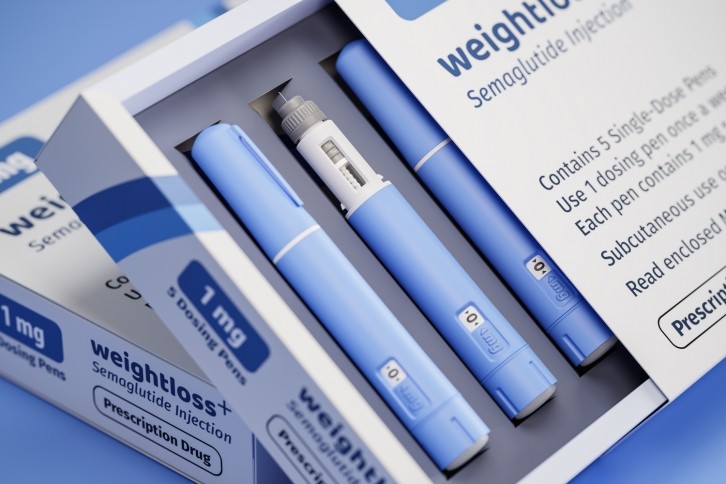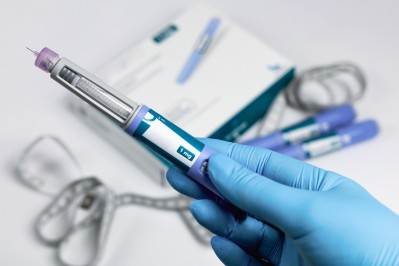How the Ozempic gold rush is causing ‘deeply concerning’ shortage for diabetes patients

Two of the most popular medications are Ozempic and Wegovy, both made by Danish pharma giant Novo Nordisk, and containing the same active ingredient – semaglutide.
Semaglutide’s mechanism of action involves enhancing insulin release, suppressing glucagon and slowing gastric emptying, which helps control blood sugar levels and promote weight loss – making it a highly effective treatment for both type 2 diabetes and obesity.
At the J.P. Morgan Healthcare conference earlier this year, Novo Nordisk CEO Lars Fruergaard Jørgensen triumphantly remarked that the company is ‘just getting going’ with its blockbuster drugs.
This positive outlook has been mirrored across the sector, with J.P Morgan also predicting that the lucrative industry may produce as much as $100 billion in revenue annually by 2030.
However, despite all corners of the industry gearing up to capitalise on soaring demand, many type 2 diabetes patients are bearing the brunt of semaglutide shortages, ‘due to a surge in off label prescriptions being issued for weight loss which is outstripping supply,’ according to Diabetes UK.
So, how can the industry mitigate these concerns, to both grow the GLP-1 market while ensuring type 2 diabetes patients are not left out in the cold?
Why is it concerning?
“It is widely acknowledged that GLP-1 is not typically the initial choice for diabetes management. Instead, it is often prescribed in conjunction with other medications as part of a comprehensive approach to diabetes treatment. This process entails a significant investment of time, investigation, and costs before practitioners arrive at the decision to include GLP-1 in the diabetes management plan,” Ash Rastegar, clinical PCN pharmacist at The Pharmacist Network, tells Bio Pharma Reporter.
“Hence, patients who are on GLP-1 class medication and whose bodies respond positively to the treatment often experience improved control of HbA1C levels. This successful management of diabetes according to plan can potentially reduce the risk of hospitalisation and complications for each patient.”
As these are complex treatment plans that require a great deal of trial and error, removing the GLP-1 element can result in a concerning knock-on effect for the patient.
“Any shortage in the availability of this medication can have a significant impact on the overall management of diabetes and may increase the associated risks,” Rastegar adds.
Sarita Menon, life science brand and content strategist, also described shortage of GLP-1 drugs and impact on diabetes patients as ‘deeply concerning’.
“These drugs play a vital role in helping diabetes patients manage their glucose-levels effectively. The shortages force patients to change medications or management plans, which puts this population at risk,” she told Bio Pharma Reporter.
Is switching medications an adequate solution?
With the UK Department of Health and Social Care saying that semaglutide supplies are not expected to return to normal until at least mid-2024, healthcare workers and patients are seeking substitute solutions to maintain treatment plans.
However, opting for less effective alternatives is viewed as a ‘step backward’ incurring additional time, costs and associated risks, Rastegar says.
In order to weather the storm of drug shortage, many providers have suggested that their patients switch to an oral semaglutide, which has not been co-opted for obesity management, so is more accessible.
However, difficulties arise when understanding how to transition from a certain dose of an injectable GLP-1 to an oral and inconsistencies can arise.
“Although alternative options like insulin and non-insulin medications are available, they may be less effective or they carry their own side effects and limited efficacies. For many patients who did well on GLP-1 drugs, the shortage could derail an effective glucose management strategy that was found to work well for them,” Menon adds.
Adrian Sanders, secretary general at Diabetes Global Network, also noted that, for any treatment already begun, a security of supply is ‘helpful’ and in some cases ‘essential’.
“Switching between similar products is not ideal, but the shortages where not even an alternative is available are most concerning and should be a priority for industry, and if needed Government intervention,” he tells Bio Pharma Reporter.
Prioritising profit over patient
For Rastegar, this isn’t the first instance, and likely won’t be the last, where the industry leverages medication side effects for alternative purposes, such as the weight loss effect associated with GLP-1.
“While weight loss can contribute to overall population health, the challenge arises when beauty standards and mass marketing come into play. Even if the industry's primary focus isn't centred around these priorities, there's a potential for black markets to exploit such effects for profit,” he says.
Indeed, the Ozempic frenzy has partly been driven by reports that celebrities have lost significant amounts of weight over a relatively short period of time.
"Social media is a big driver of the significant demand and use of GLP-1s, however, regulators, some pharmaceutical companies and some healthcare professionals are not doing enough to manage this high demand," Dr. Michael Kyle, chief medical officer of Currax, told Bio Pharma Reporter.
While the need for more effective and accessible weight-loss treatments is undeniable, the overwhelming buzz has arguably obscured the needs of diabetes patients – the original recipients of these medications.
“Most people agree the principle that medicines and treatments should be accessible based on need, not ability to pay. Here we have a situation where purchasing power by people not assessed as a priority are creating shortages for those who are,” Sanders adds.
On one hand, the surging demand for GLP-1 agonists as weight loss drugs presents an ‘unprecedented’ market opportunity which could potentially contribute to 1% of the US GDP, Menon outlines.

“However, the lack of long term studies looking at the effects of GLP-1 drugs as a weight-loss medication should also be factored in. So even though the financial incentive to prioritize the drug for weight-loss is there, it becomes very important to carefully consider both aspects before the industry can bet big,” she adds.
How can the industry move forward?
The GLP-1 market continues to heat up, with Novo Nordisk now facing serious competition from Eli Lilly, who is ploughing ahead with its own GLP-1 receptor, Mounjaro.
In fact, GlobalData claims that Mounjaro will become the leading GLP-1 therapy in the type 2 diabetes and obesity space within the next decade, particularly within the UK market.
With so much potential and capital at stake, prioritising supply and demand as well as managing the amount of people accessing GLP-1 medications solely for weight loss, is critical.
"Healthcare providers should not write for a GLP-1 or any other anti-obesity medication without a proper assessment and investigation of the underlying factors, just because the patient saw an 'influencer' on social media," Kyle comments.
Rastegar agrees that it is 'essential' to reconsider initiating GLP-1 medication for new patients in light of the shortage.
"Public education also plays a crucial role in controlling the market, as using GLP-1 solely for weight loss purposes may pose risks if not prescribed appropriately and supervised by healthcare professionals and specialists,” he says.
Sanders, a senior member of the Parliamentary Diabetes Global Network, says his organization is recommending members contact their elected representatives and where appropriate, call for an enquiry.
As Novo Nordisk’s recent $16.5 billion deal with CDMO Catalent indicates, the industry is scrambling to secure supply chains, in order to boost production and cement its position in this extremely attractive market.
“To solve the shortage issue of GLP-1 drugs and make sure that diabetes patients have uninterrupted access to their medications while also meeting the growing demand for weight loss drugs would require pharmaceutical companies to increase production capacity. Regulating the off-label use of the drugs for weight loss could also help in balancing the supply and meeting demands fairly,” Menon adds.













